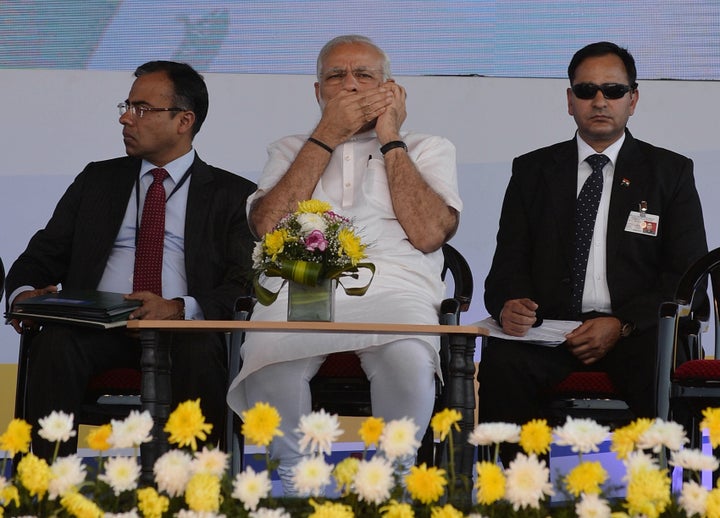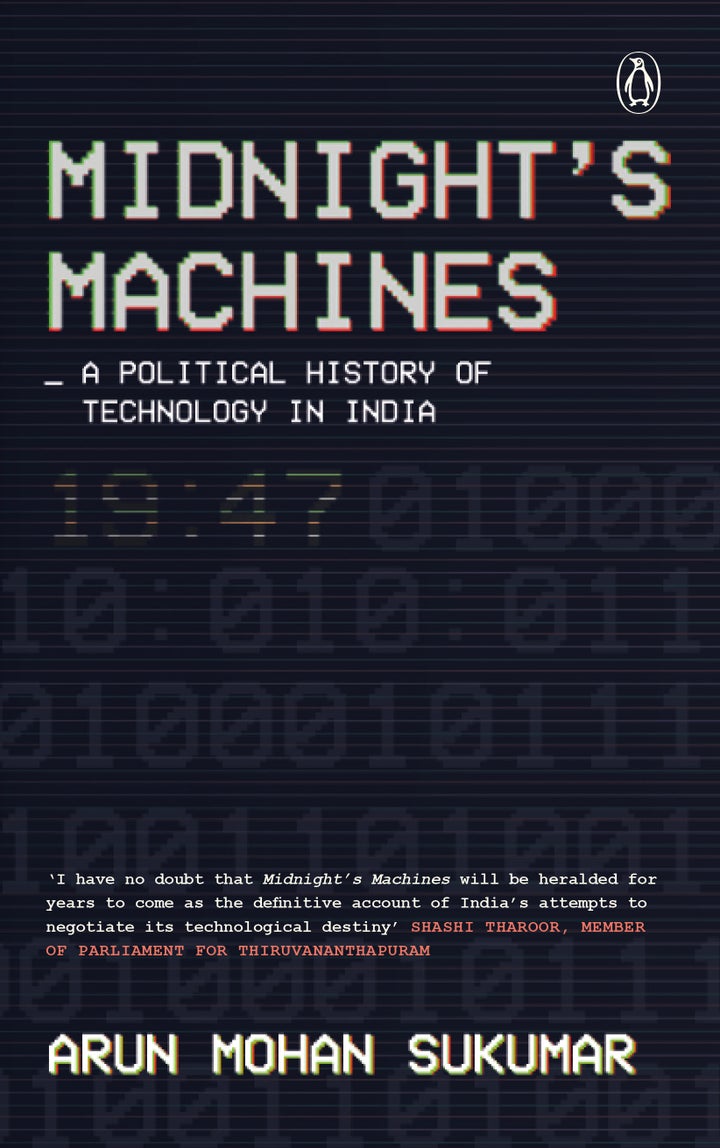
Even as it attempts—through its formidable grass-roots network and financial resources—to wean away the electorate from political outfits that pose as their constitutional guardians, the BJP has broken new ground with technology. First, it has taken advantage of the pervasiveness of digital platforms, using them to reach out and talk directly to communities that were once out of its grasp. Women across Indian society, who appear to have voted overwhelmingly for Modi in 2019, are one such constituency that the BJP assiduously cultivates through WhatsApp channels and digital media. Technology has disrupted traditional household voting patterns in India, and thanks to new-found digital access to news, views and narratives, women no longer follow the political preferences of their husbands or male elders in the family. Modi has expertly harvested their agency and empowerment.
For the latest news and more, follow HuffPost India on Twitter, Facebook, and subscribe to our newsletter.
Second, the Prime Minister has seized the aspirational attributes of technology, which transcend class or caste. It is not just Modi’s savvy handling of technology that appeals to Indian youth, but also his identity as a technocrat eager to understand and embrace innovation. This identity papers over cleavages in India, as technology represents change and mobility no matter where one is in the social strata. It is also a potent weapon to use against the BJP’s opposition—which has thus far relied on such cleavages—to project them as opponents of modernization. Former finance minister (the late) Arun Jaitley had, for instance, billed the Congress as ‘anti-technology’ precisely in this vein. Modi has thus broken the mould of ‘Mandal politics’, pitching his vision for economic development of all, or ‘sabka vikas’. Technology is integral to this pitch, both in communicating the message of the modernizer, and as a totem of modernity that is immediately relatable to the ordinary citizen. Just as well, he has also begun to leave behind ‘Mandir politics’, or electioneering along communal lines that has been the mainstay of the BJP’s poll strategies. To consolidate the votes of Hindus across India, Modi has appealed increasingly to the economic advancement—and not spiritual enlightenment—of their faith. The communal appeal may have propelled him to national politics, but once at the helm, Modi has realized the limits of pandering to sectarianism. He may be a long-time swayamsevak, but the Prime Minister is today inspired by the views of Madan Mohan Malaviya, the leading light of the Mahasabha, who championed a Hindu Renaissance through economic awakening. Modi knows, more than anyone else in the BJP today, that communal polarization may at best stir a sense of identity among Hindus, but cannot sustain it.
For all these reasons, Modi has been extremely sensitive to claims that his government is ill-equipped to steer the technological advancement of India. In early 2019, when a small group of start-ups from Bengaluru spearheaded a digital campaign to abolish ‘angel tax’—entrepreneurs were required to cough up a proportion of the seed funding they received from early-stage investors and venture capitalists—the government intervened within days to jettison the
rule. In 2015, when the government’s draft encryption policy was criticized by industry for being unmindful of the security of digital networks, the proposed regulations were promptly rolled back and a ‘junior government official’ assigned the blame. The Unique ID project (Aadhaar) is among the few initiatives of the Congress-led UPA government that Modi signed onto in its early stages of development as Gujarat’s chief minister, and subsequently expanded when he took the wheels in New Delhi. Modi’s team shrewdly mobilized the beneficiaries of UPA-era projects that he had continued, to ensure they turned up at the polling booth in the summer of 2019.
Despite his fondness for technology, why then did Modi refer to it as a ‘problem’ during his interaction with school kids and their parents? A fairly straightforward explanation is that the same technology that the Prime Minister has used to seal fractious social coalitions has also pried them open. Communal violence in India is no longer manifested in the form of large-scale riots, but as micro- aggressions involving localized rumours on Facebook, Twitter, TikTok or WhatsApp. No matter how adept the BJP has been in its use of digital tools in electioneering, it cannot hope to control some of the pernicious, even deadly, outcomes of sectarian violence ferried by digital networks. It was the BJP that complained to the Election Commission in 2019 about the malevolent role of foreign digital platforms in facilitating disinformation and unlawful interference in
the Lok Sabha polls.
A less obvious reason why technology has come to perplex Modi is its possible impact on civic mobilization. Will the ubiquitous role of technology in the lives of Indians reduce their commitment to community and country? The ‘narrowing of minds’ that Modi spoke about had equally to do with the retreat of the individual from the public space, as it did with the use of technology for shrill and parochial purposes. If Nehru was concerned about the depletion—to use the political scientist Robert Putnam’s phrase—of ‘social capital’ in India on account of technology, Modi is concerned about the political fallout from public de-mobilization. Demagogues thrive on rallying their voter base, and their victory is often the consequence of stirring a dispirited population that yearns for change. Throughout modern history, leaders with autocratic tendencies who projected a messianic political appeal have elicited high voter turnouts at elections—be it Hitler, Mussolini, Turkey’s Erdogan, Philippines’ Duterte or Sri Lanka’s Rajapaksa. Modi’s strategy is no different. The Prime Minister has begun to worry about the deleterious consequences of technology on society: in the United States, for instance, technological advancement and modernization has been coterminous with a dramatic fall in voter turnout. Political apathy on account of social alienation caused by technology—a well-studied phenomenon—would be fatal for Modi’s project to mobilize a pan-Indian electoral base.
In a twisted, wickedly ironic way, the spirit of Nehru has returned to haunt Modi. The country has come a full circle in its embrace of technology. Starting out as it did an extremely poor nation, India was forced to confront the reality that most modern technologies were beyond its grasp. The governing elite of the time also believed technology could corrupt the minds of a people who had just wrenched their freedom back from Western hands. If that belief stemmed initially from benign patronage, it descended over time into a lazy shibboleth and convenient excuse for the state’s inability to innovate or let the private sector create technologies at scale. The political programming of popular narratives has variously had, over decades, the effect of fear-mongering and ill-
informed scepticism about technology. The ubiquity of machines may make no difference to governments of the future. Modi, who farmed the benefits of technology for his own meteoric political rise, is apprehensive that a society ‘wired’ to digital networks may no longer share the enthusiasm for transformative nation-building—the very idea that propelled him to power.
Will such a situation really come to pass? Will the twenty-first century Indian, chained to their handheld device or sundry ‘smart’ appliances, exhibit the same ‘dis-social’ tendencies that Robert Putnam observed in the TV rooms of modern America? In 2017, the Indian government and the United Nations Development Programme commissioned a study on youth volunteerism in the country. The study surveyed nearly 3500 individuals across India, most of them ‘digital natives’ born after Internet services became commercially available in 1995.89 The majority of surveyed respondents spent less than six hours a week on volunteer activities. More worryingly, the survey found the Internet had a negligible effect on volunteerism: less than 3 per cent volunteered through online channels. Concurrently, the average time spent by young Indians on their smartphones has increased steadily, and hovers currently around four hours a day. Taken together, these figures present the Indian government with the worrying conclusion that civic engagement may indeed be adversely affected as Indians deepen their embrace of technology.

Excerpted with permission from Midnight’s Machines by Arun Mohan Sukumar, Penguin.